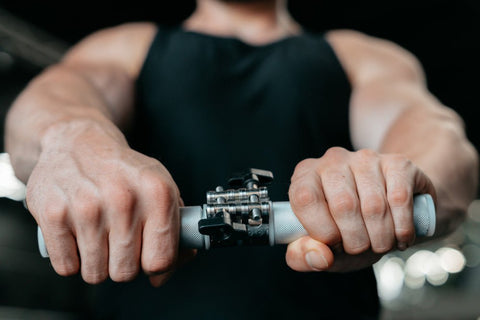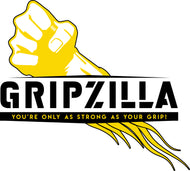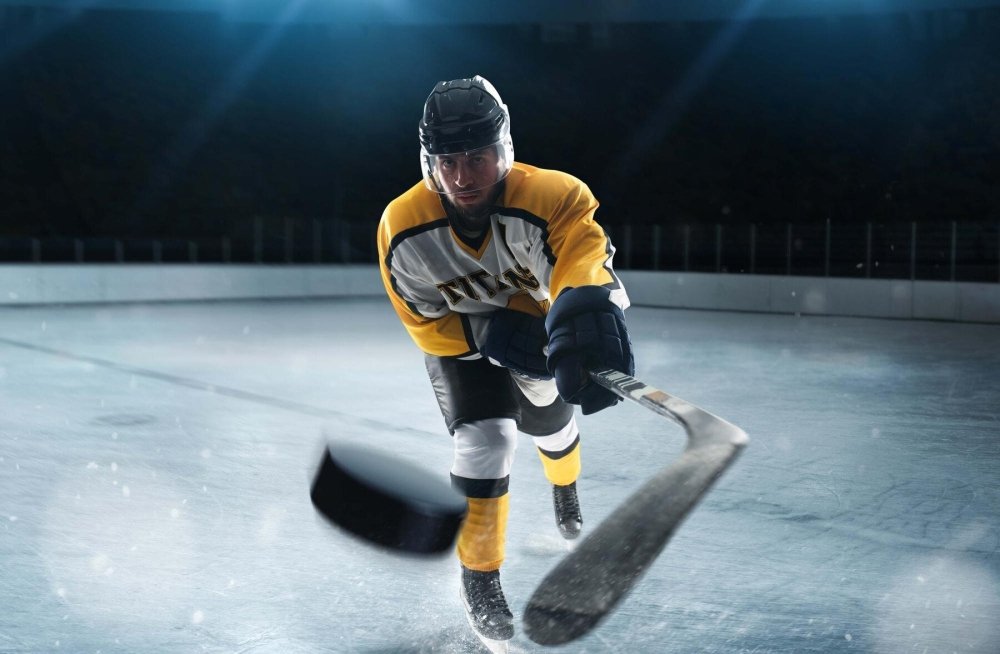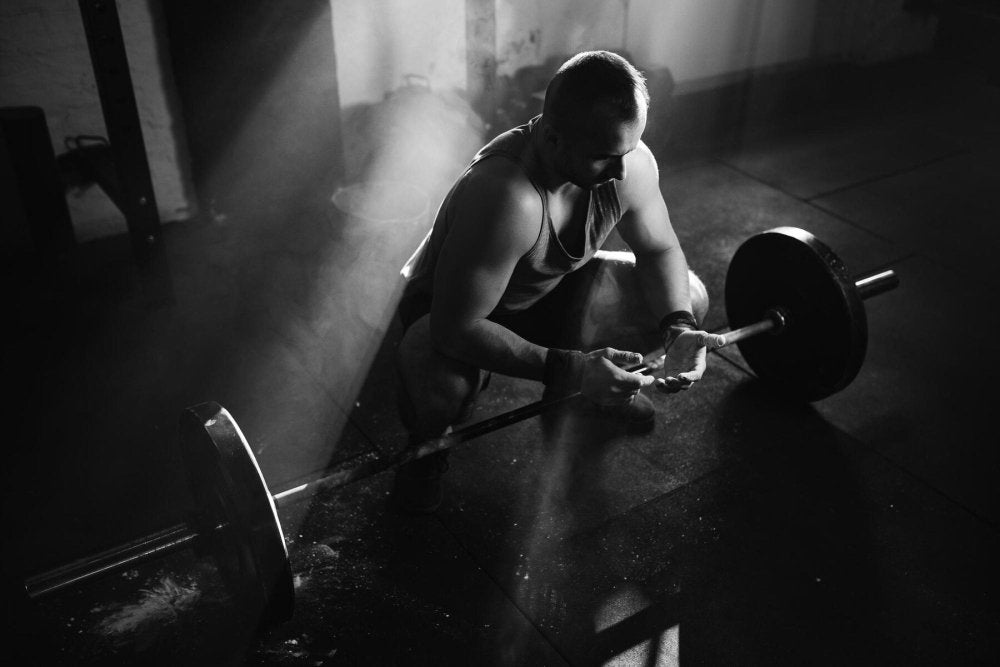Ever wondered why some grapplers seem to execute those killer sweeps and submissions effortlessly?
Well, spoiler alert: it's not just about technique. Strength plays a massive role in Jiu Jitsu success.
So, let's kick things off with a question: How's your core feeling?
A strong core isn't just about looking good at the beach; it's your body's powerhouse for generating force and stability.
But hey, let's not forget about the upper body, shall we?
Your arms and shoulders are like the cherry on top of your grappling sundae.
Let’s get to the point.
We're here to sprinkle some strength-building magic into your Jiu Jitsu venture.
Today, we're going to talk about the best strength exercises for Jiu Jitsu.
Shall we start? YES PLEASE!
Jiu Jitsu Exercises For Beginners
If you are a beginner and you want to excel in Jiu Jitsu, these are the best drills to go with:
1. Gripzilla Tornado

The Gripzilla Tornado with a roller at the bottom offers several benefits for Jiu Jitsu practitioners.
By holding the device with a roller at the bottom and matching the resistance level with their strength, athletes can perform curls upwards, engaging the forearm muscles essential for controlling grips and maintaining holds during grappling exchanges.
This exercise helps develop forearm strength and endurance, improving grip strength for controlling opponents, executing submissions, and defending against attacks.
Step-By-Step Guide:
- Hold Gripzilla Tornado with roller at the bottom.
- Match resistance level with your strength.
- Stand tall, extend arms, and curl Tornado upwards.
- Flex wrists and contract forearms smoothly.
- Hold at chest briefly, then lower slowly.
- Experiment with hand positions and movements.
- Gradually increase resistance for more strength.
2. Farmer's Walk

Farmer's walks help build grip strength, which is crucial for controlling opponents and maintaining grips during grappling exchanges in Jiu Jitsu.
Additionally, this Jiu Jitsu exercise strengthens the muscles of the core, back, shoulders, and legs, providing stability and power for executing takedowns and throws and maintaining posture while on the ground.
Step-By-Step Guide:
- Stand between two heavy weights (dumbbells or kettlebells) placed on the ground.
- Bend at the hips and knees to grip the weights with a neutral spine and engage your core.
- Lift the weights by extending your hips and knees.
- Keep your chest up and shoulders back as you walk forward with short, quick steps.
- Maintain a strong posture and avoid leaning to one side.
- Walk for a predetermined distance or time, keeping the weights under control.
3. Kettlebell Swings

Kettlebell swings are among the best Jiu-Jitsu drills for developing explosive hip power, which is essential for generating force in movements like bridging, hip escapes, and explosive transitions.
This exercise also targets the posterior chain muscles, including the glutes, hamstrings, and lower back, improving overall strength and resilience during grappling engagements.
Step-By-Step Guide:
- Stand with your feet shoulder-width apart and a kettlebell on the floor in front of you.
- Bend your knees slightly and hinge at your hips to grasp the kettlebell with both hands, keeping your back flat.
- Swing the kettlebell between your legs, keeping your arms straight.
- Explosively drive your hips forward and swing the kettlebell up to shoulder height, using the momentum generated by your hips.
- Keep your core engaged and maintain a strong, neutral spine throughout the movement.
4. Squats

Squats are fundamental for building lower body strength, including the quadriceps, hamstrings, and glutes, which are essential for executing powerful takedowns, maintaining a stable base, and driving through movements like passing the guard or escaping from bottom positions in Jiu-Jitsu.
Additionally, squats improve overall lower body mobility and stability, reducing the risk of injury during training and competition.
Step-By-Step Guide:
- Stand with your feet shoulder-width apart and your toes pointing slightly outward.
- Brace your core and keep your chest up as you initiate the movement by pushing your hips back and bending your knees.
- Lower your body down by sitting back into your heels, keeping your knees in line with your toes and your spine neutral.
- Continue lowering yourself until your thighs are parallel to the ground or as low as you can comfortably go.
- Drive through your heels to push yourself back up to the starting position, fully extending your hips and knees.
5. Pull-Ups

Pull-ups have to be on your list of best exercises for Jiu Jitsu as they strengthen the muscles of the upper back, arms, and grip.
By developing upper body strength and endurance, pull-ups improve grappling performance against opponents' attacks.
Step-By-Step Guide:
- Grip an overhead bar with your hands slightly wider than shoulder-width apart and your palms facing away from you.
- Hang from the bar with your arms fully extended and your shoulders relaxed.
- Engage your core and pull your shoulder blades down and back as you pull yourself up towards the bar.
- Continue pulling until your chin clears the bar, then lower yourself back down with control until your arms are fully extended.
Jiu Jitsu Exercises At Home
Here are the best Jiu Jitsu drills you can do at home or anywhere else:
6. Gripzilla Dynamo

The Gripzilla Dynamo, with its adjustable resistance knobs, provides customizable resistance options tailored to individual goals and preferences in Jiu Jitsu training.
Athletes can adjust the resistance level to match their current strength level, allowing for progressive overload and continuous improvement in forearm and grip strength.
Step-By-Step Guide:
- Adjust Gripzilla Dynamo resistance with knobs.
- Customize resistance for goals.
- Choose hand position (horizontal, vertical, 45 degrees).
- Rotate in both directions for forearm muscles.
- Get creative with personalized moves.
- Start with comfortable resistance, then increase.
7. Sit-Through

Sit-throughs enhance agility, coordination, and core strength, making them beneficial for improving mobility and fluidity in Jiu Jitsu movements such as guard passing, transitioning between positions, and avoiding sweeps or submissions.
By engaging the core and rotating the hips, sit-throughs also help develop the rotational strength necessary for executing techniques with efficiency and control.
Step-By-Step Guide:
- Start in a plank position with your hands directly under your shoulders and your feet hip-width apart.
- Lift your right hand off the ground and rotate your body to the left, bringing your right leg under your body and extending it out to the left side.
- Your left foot should pivot as you rotate your hips and torso.
- Return to the plank position and repeat the movement on the other side, lifting your left hand and bringing your left leg under your body to the right side.
8. Hip Thrust

Hip thrusts primarily target the glutes and hamstrings, which play a crucial role in generating power for bridging, hip escapes, and explosive movements in Jiu Jitsu.
Hip thrusts are among the Jiu-Jitsu exercises for beginners that improve stability and explosiveness in grappling exchanges by enhancing the ability to generate force from the hips while maintaining control over opponents.
Step-By-Step Guide:
- Sit on the ground with your upper back resting against a bench and a barbell positioned across your hips.
- Roll the barbell over your legs until it is directly above your hips.
- Plant your feet firmly on the ground, hip-width apart, and brace your core.
- Drive through your heels to lift your hips toward the ceiling until your body forms a straight line from your shoulders to your knees.
- Squeeze your glutes at the top of the movement, then lower your hips back down to the starting position.
9. Push-Ups

Push-ups target the muscles of the chest, shoulders, triceps, and core, providing foundational strength for maintaining posture, creating space, and executing pressing movements in Jiu Jitsu.
This exercise also improves shoulder stability and resilience, reducing the risk of shoulder injuries common in grappling sports while enhancing overall upper body strength and endurance.
Step-By-Step Guide:
- Start in a plank position with your hands shoulder-width apart and your arms fully extended.
- Engage your core and lower your body towards the ground by bending your elbows, keeping them close to your sides.
- Lower yourself until your chest nearly touches the ground, then push yourself back up to the starting position by straightening your arms.
- Keep your body in a straight line from your head to your heels throughout the movement, and avoid letting your hips sag or your lower back arch.
Time to Finish Strong
We hope you have liked these best strength exercises for Jiu Jitsu to dominate on the mats.
But before we wrap things up, let us leave you with a few parting thoughts.
How's your strength game looking these days?
Are you putting in the work off the mats to level up your game on the mats?
Remember, Jiu Jitsu is a consistent effort, and every rep, every set, and every roll brings you one step closer to greatness.



